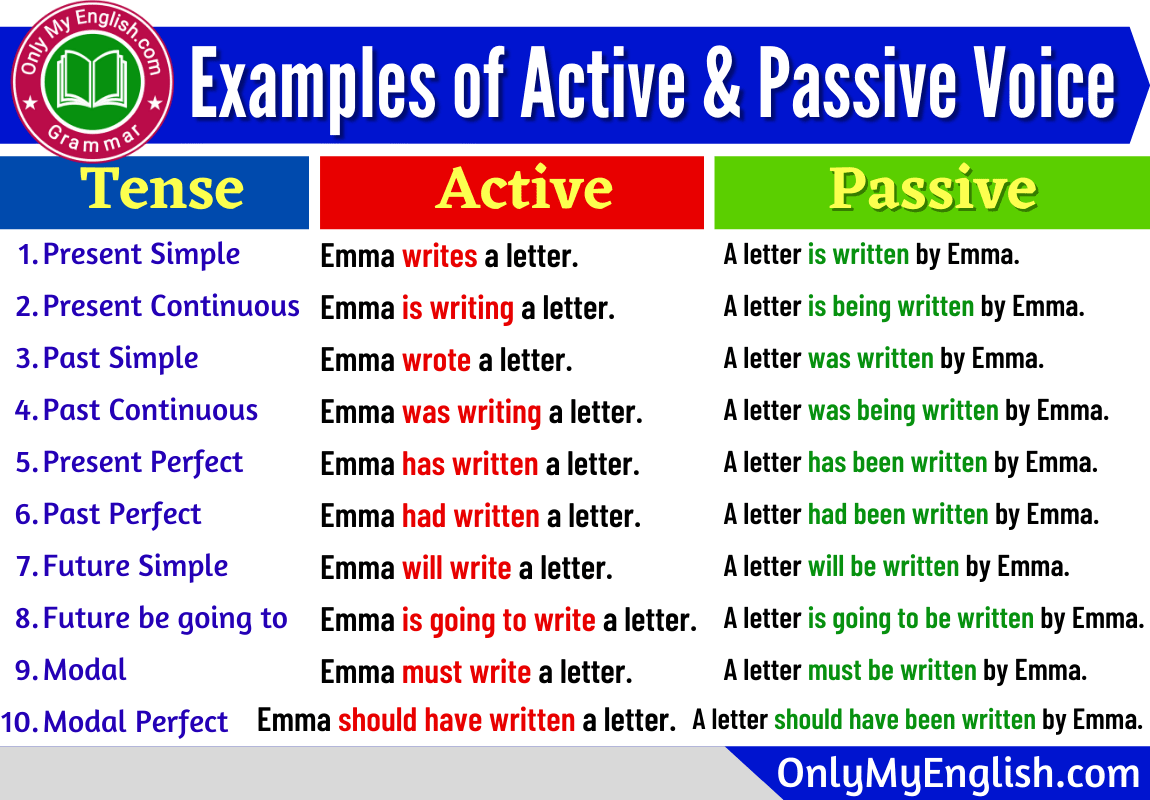In English grammar, the way a sentence is structured can be classified as either active or passive voice. Active voice occurs when the subject of the sentence performs the action, while passive voice occurs when the subject receives the action. Understanding the difference between the two can help improve the clarity and effectiveness of your writing.
Here are some examples of active and passive voice sentences:
Active and Passive Voice Examples
Active Voice: The cat chased the mouse.
Passive Voice: The mouse was chased by the cat.
In the active voice example, the subject “cat” performs the action of chasing, while in the passive voice example, the subject “mouse” receives the action of being chased. Active voice is often preferred in writing as it is more direct and engaging for the reader.
Another example:
Active Voice: The teacher praised the students.
Passive Voice: The students were praised by the teacher.
Again, in the active voice sentence, the subject “teacher” is the one performing the action of praising, while in the passive voice sentence, the subject “students” are the recipients of the praise. Active voice sentences are usually clearer and more concise than passive voice sentences.
It is important to note that passive voice can be useful in certain situations, such as when the focus is on the recipient of the action rather than the doer. However, using passive voice too frequently can make writing sound dull and less engaging. Active voice is generally more dynamic and keeps the reader more engaged.
Here’s one more example:
Active Voice: The team won the championship.
Passive Voice: The championship was won by the team.
In this pair of sentences, the active voice clearly conveys the action of winning by the team, while the passive voice sentence puts the focus on the championship being won without specifying who won it. Active voice is often preferred in storytelling and persuasive writing to keep the reader interested and involved in the action.
In conclusion, understanding the difference between active and passive voice can help you enhance the clarity and impact of your writing. While passive voice has its place, active voice is generally more direct and engaging for readers. By practicing both forms of writing, you can improve your overall communication skills and effectively convey your message to your audience.
